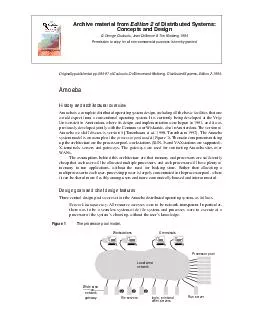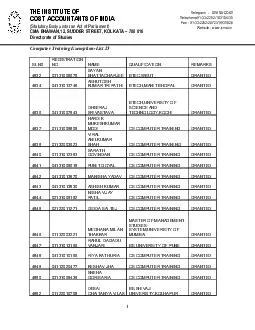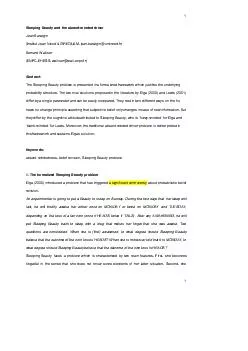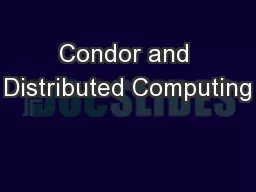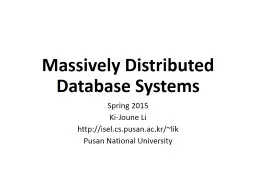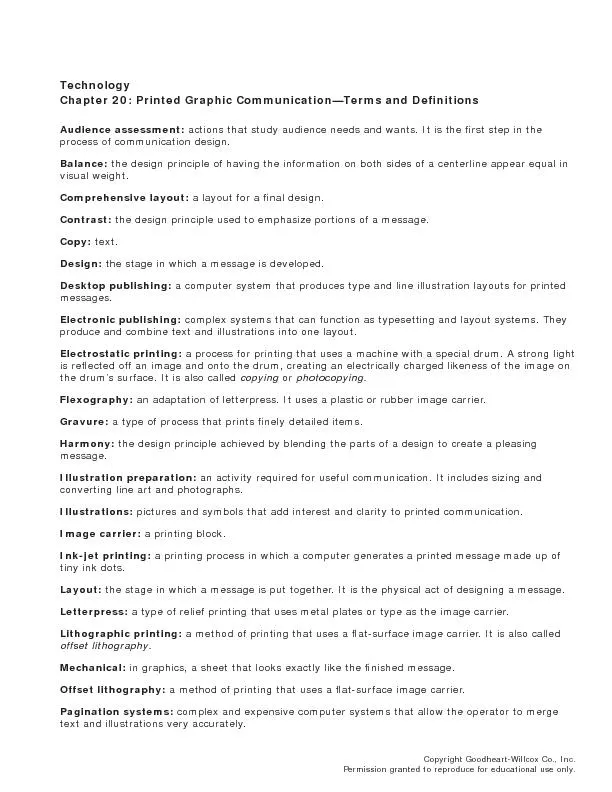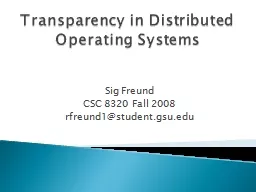PDF-Archive material from Edition of Distributed Systems Concepts and Design George Coulouris
Author : celsa-spraggs | Published Date : 2015-02-01
58497 of Coulouris Dolllimore and Kindberg Distributed Systems Edition 2 1994 Amoeba History and architectural overview Amoeba is a complete distributed operating
Presentation Embed Code
Download Presentation
Download Presentation The PPT/PDF document "Archive material from Edition of Distri..." is the property of its rightful owner. Permission is granted to download and print the materials on this website for personal, non-commercial use only, and to display it on your personal computer provided you do not modify the materials and that you retain all copyright notices contained in the materials. By downloading content from our website, you accept the terms of this agreement.
Archive material from Edition of Distributed Systems Concepts and Design George Coulouris: Transcript
Download Rules Of Document
"Archive material from Edition of Distributed Systems Concepts and Design George Coulouris"The content belongs to its owner. You may download and print it for personal use, without modification, and keep all copyright notices. By downloading, you agree to these terms.
Related Documents

